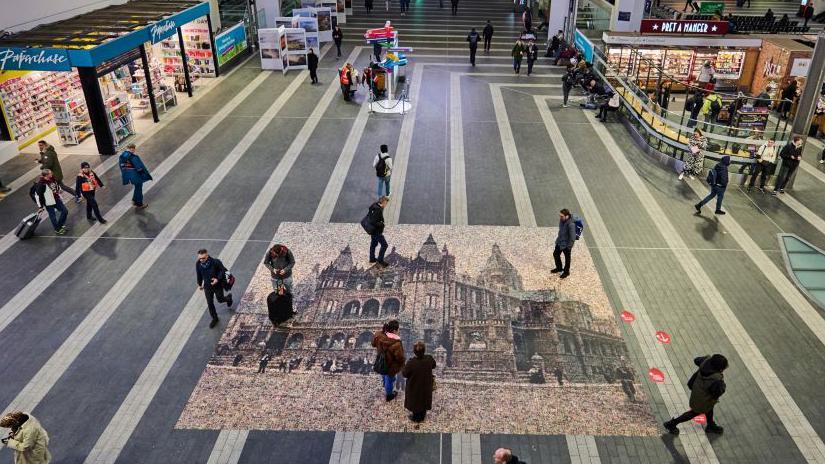Giant mosaic marks hospital's birthday

At a glance
The giant mosaic shows how Birmingham Children's Hospital looked in the early 1900s
It is made up of 850 tiles showing faces of staff and patients over the years
It will be on display at New Street Station until 4 December
- Published
A huge mosaic has been unveiled to mark Birmingham Children's Hospital's 160th anniversary.
It features 850 faces, that together form an image of the hospital as it looked in the early 1900s.
The individual faces are of patients and staff, past and present.
The 7m x 8m (22ft 11in by 26ft 3ins) mosaic will be on display in Birmingham New Street Station's concourse until 4 December.
The installation "celebrates just how many lives this incredible hospital has impacted over the decades and how many people are part of its proud history", the hospital's charity said.
Originally called the Birmingham and Midlands Free Hospital for Sick Children, it was opened in Steelhouse Lane in 1862 after a fundraising campaign.

Each mosaic tile is of a staff member or patient at the hospital
The project was led by physician Thomas Heslop who wanted to create a dedicated institution for children when disease in the industrial city "was rife", a charity spokesperson said.
Many children were living in poverty and infant mortality rates were high.
Over the years, the hospital moved to larger premises on Ladywood Middleway before relocating back to Steelhouse Lane and its current home.
The hospital, which treats about 90,000 children a year, has also asked people to scan a QR code next to the mosaic and help support it.
Mark Brider, chief executive of Birmingham Children’s Hospital Charity, said it was thrilled to be celebrating "such an incredible milestone".
"We have a long and proud history of supporting local children and to see so many of them incorporated into this beautiful display really brings home how many lives we’ve changed for the better and how lucky we are to have such a world-renowned paediatric centre on our doorstep," he said.
"I’d really encourage people to stop and ponder when visiting the installation."
He also thanked Network Rail for allowing the charity to use its main concourse, used daily by thousands of people.
"No doubt many of those people will have a connection to our hospital themselves," he added.